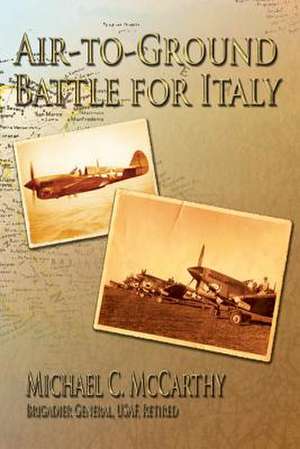Air-To-Ground Battle for Italy
Autor Michael C. McCarthyen Limba Engleză Paperback
Preț: 126.17 lei
Nou
Puncte Express: 189
Preț estimativ în valută:
24.14€ • 25.27$ • 19.98£
24.14€ • 25.27$ • 19.98£
Carte disponibilă
Livrare economică 15-29 martie
Preluare comenzi: 021 569.72.76
Specificații
ISBN-13: 9781478350835
ISBN-10: 1478350830
Pagini: 118
Dimensiuni: 152 x 229 x 6 mm
Greutate: 0.17 kg
Editura: CREATESPACE
ISBN-10: 1478350830
Pagini: 118
Dimensiuni: 152 x 229 x 6 mm
Greutate: 0.17 kg
Editura: CREATESPACE
